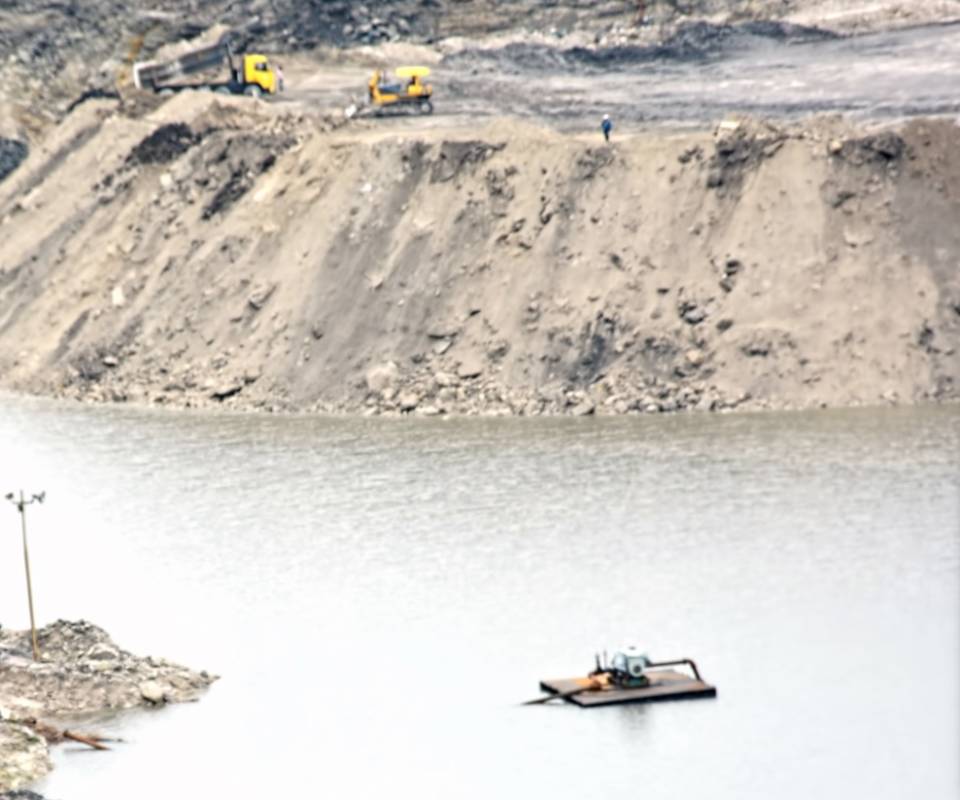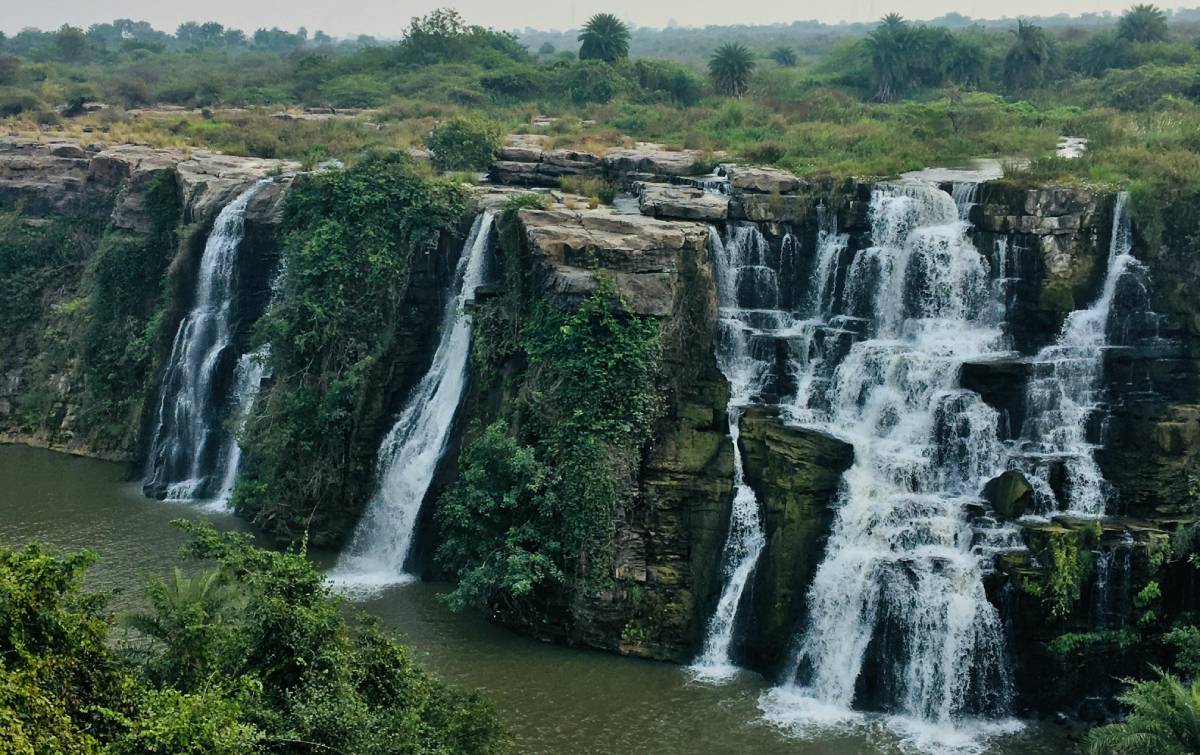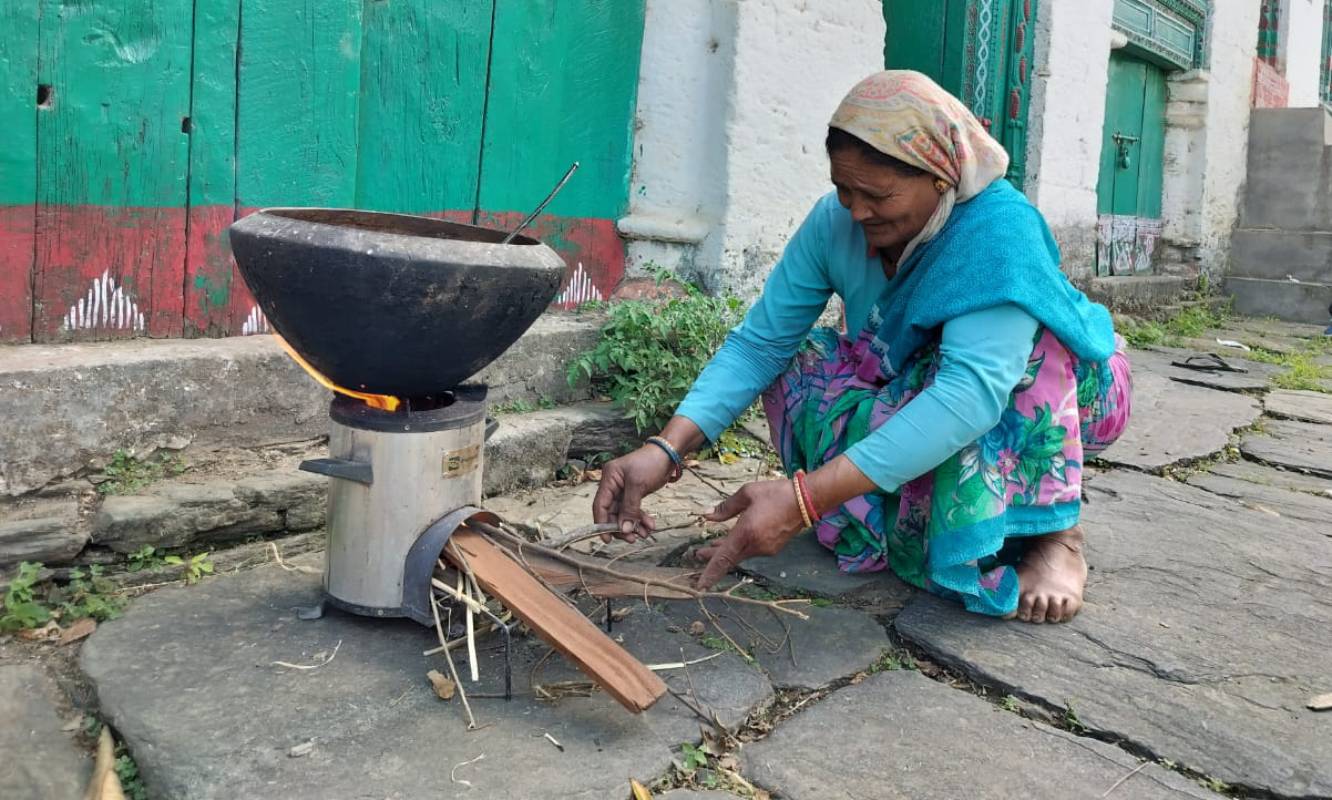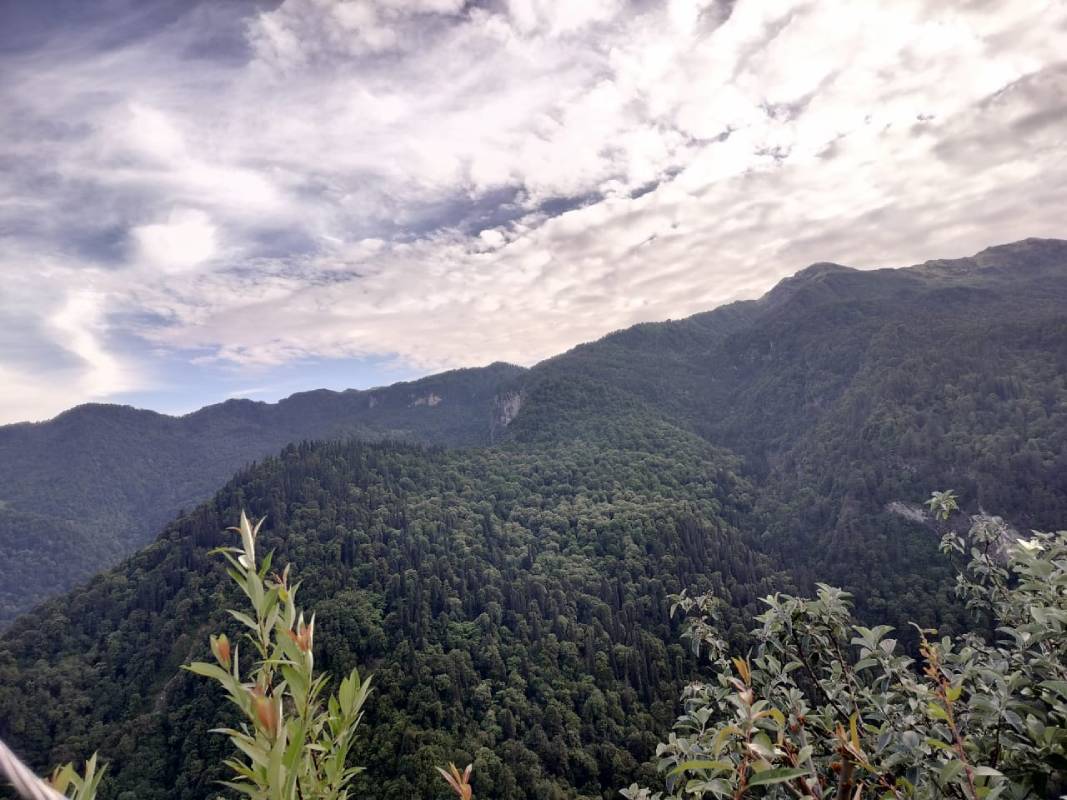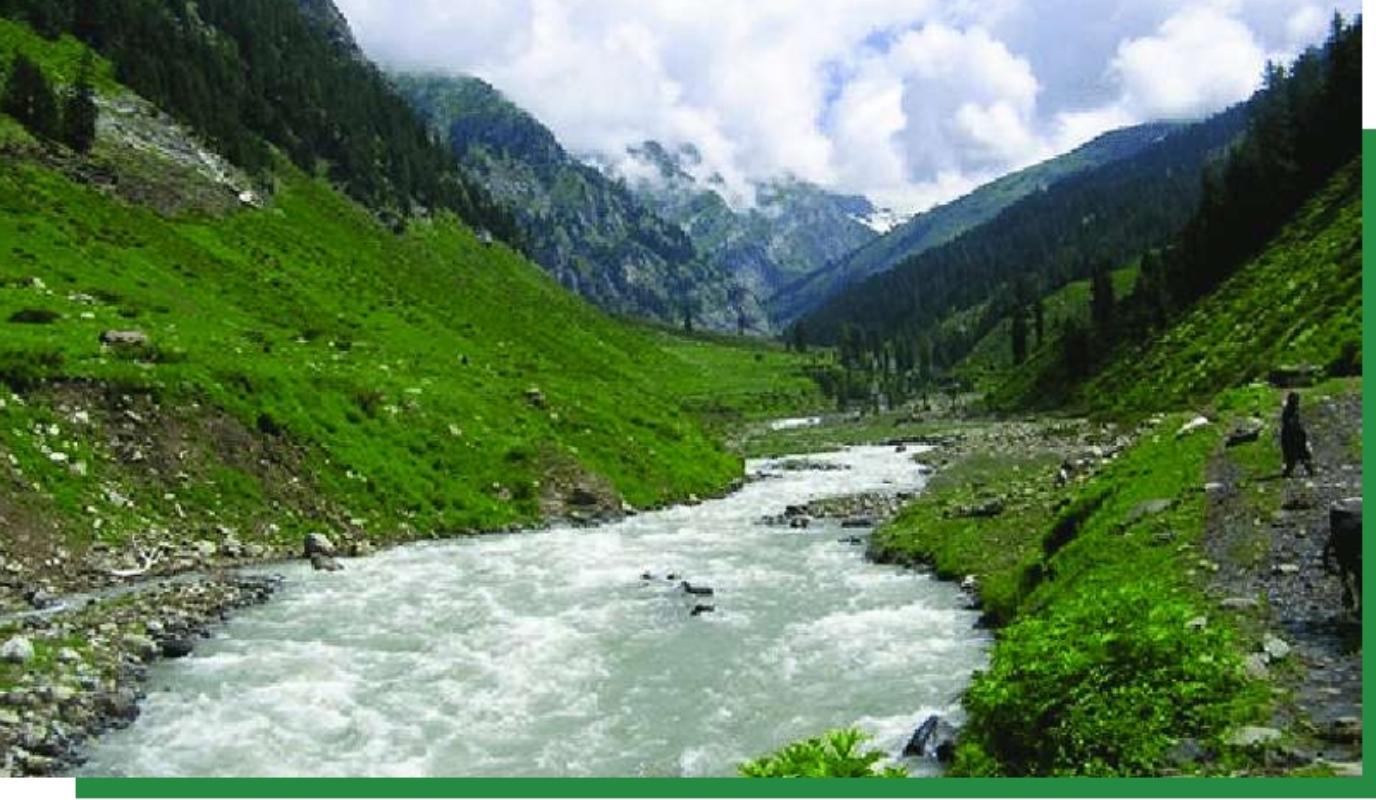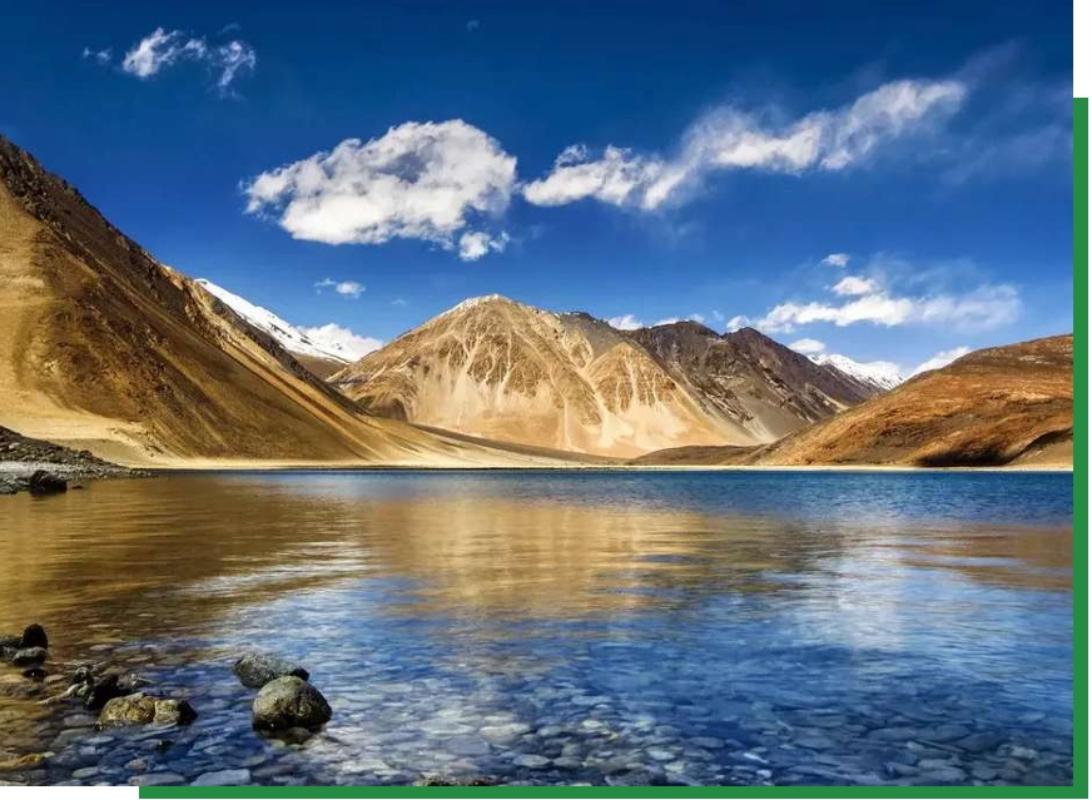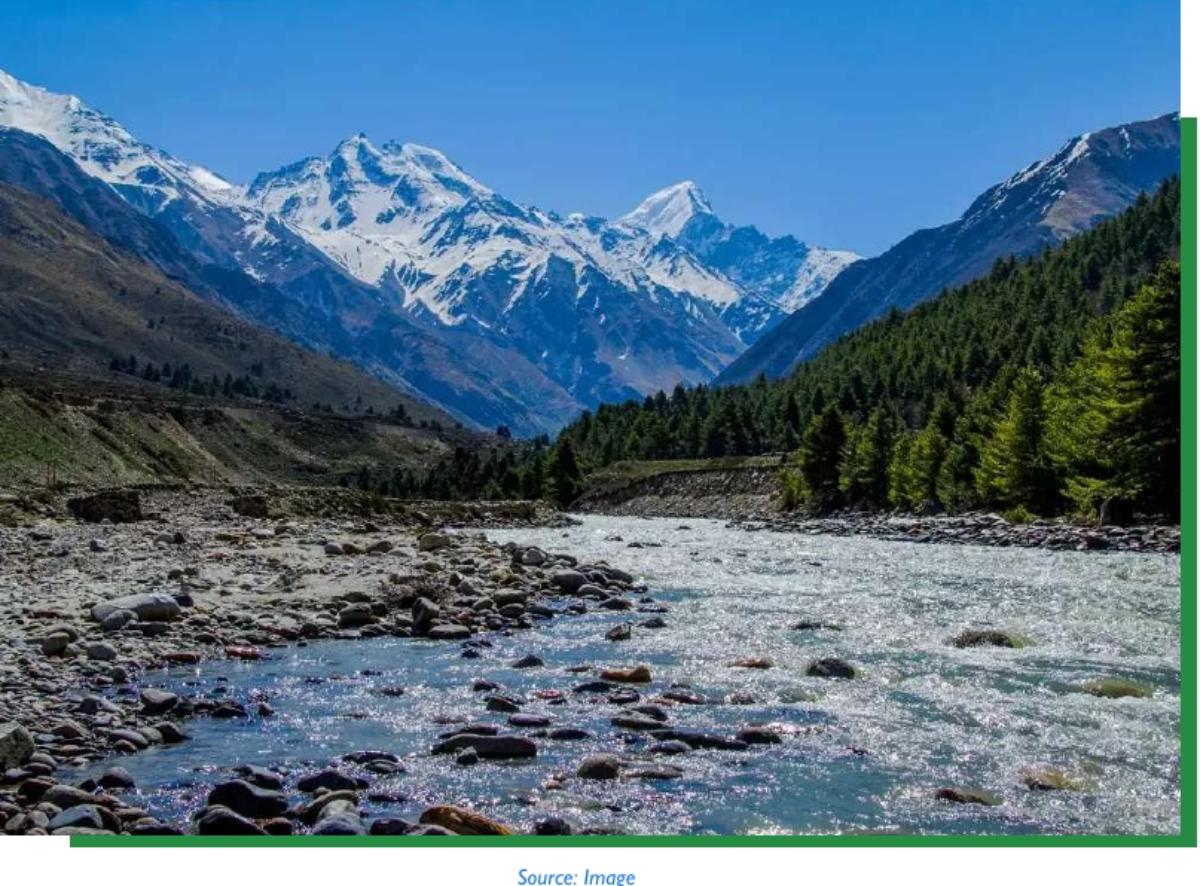Environment and Developmental Issues in Mining Areas
The history of mineral extraction in India dates back to the days of the Harappan civilization. The wide availability of the minerals provides a base for the growth and development of the mining sector in India. The country is endowed with huge resources of many metallic and non-metallic minerals. Mining sector is an important segment of the Indian economy. Since independence, there has been a pronounced growth in mineral production, both in terms of quantity and value. India produces 95 minerals, which include 4 fuel, 10 metallic, 23 non-metallic, 3 atomic and 55 minor minerals. The total value of mineral production (excluding atomic and fuel minerals) during 2019-20 has been estimated at INR 1,23,588 crore in which metallic minerals is INR 60,822 crore or 49.21% of the total value and nonmetallic minerals including minor minerals is INR 62,766 crore or 50.79% of the total value[1].
Socio-Economic problems in Mining Areas are almost the same in pan India, often the local populace know little about mining rules and policies, their rights and regulations, their occupational issues, process to mitigate their livelihood issues and problems, disturb family structure and system, health issues due to air, water, soil and noise pollution, burden of heavy traffic in all mode of commuting – roads and railways, accidents, road safety and security, mining closures, land reclamations, etc. Though, it is a major source of government’s revenue but somehow adversely impacts the lives of mining families, no matter whether they are directly or indirectly. A report published by a team of independent researchers in November 2017, titled ‘Health and Environmental Impact of Mining in Chhattisgarh’, noted that they found the presence of “worrisome levels of toxic substances that adversely affect human health” in soil and sediment samples from the area[2]. The fear of reddish water contaminated with iron ore is very high in certain pockets of Dantewada, Chhattisgarh, it is because of high iron contains in water, hence, villagers less rely on hand pumps and women with handis (pots) on their heads going to fetch water to nearby comparatively pure water source[3], though the GoCG had tried a project in 33 villages adjoining to Nareli and Guhari[4], but it could not steal a march on.
Keonjhar district, considered being the mining hub of Odisha, a total of jeet4 mining projects have led to the diversion of 10,451.39 hectares of forest land over 38 years. According to government data, this was the highest loss of green cover in any district in Odisha since 1980. Talakainsari is a village panchayat, comprising several villages, in the Banspal block of the district. Frequent dumping of processed rocks–mineral-rich rocks leftover after mining, which are a source of air pollution as they make the area dusty — has escalated the woes of villagers[5].Thepeople in the Jadugoda area of Jharkhand are affected not only by radiation from tailing ponds but also by lackof security at the mines. Fatigue, loosing appetite, respiratory sicknesses, rises in miscarriages,impotency, infant mortality, Down’s syndrome, skeletal deformities and different skin diseases,children with big heads, thalassemia have been reported, also thechances of tuberculosis amongthe miners is very high[6].
The Idea of District Mineral Foundation
To address development and environmental issues of people and region affected from mining activities, the Mines and Mineral (Development & Regulation) Amendment Act, 2015 provided for constitution of District Mineral Foundations (DMFs) in each district. At the national level activities and governance of DMFs are regulated through guidelines issued under Pradhan Mantari Khanij Khetra Yojana (PMKKY )
District Mineral Foundation (DMF) is a trust set up as a non-profit body, in districts affected by the mining works, to work for the interest and benefit of persons and areas affected by mining related operations. It is funded through the contributions from mineral royalty. Its manner of operation comes under the jurisdiction of the respective State Government. Further, Recognizing that people’s relevance and participation lies at the core of this institution, the objective and functioning of DMF has been tied to three primary laws of the land — the constitutional provisions as it relates to Fifth and Sixth Schedules for governing tribal areas, the provisions of the Panchayats (Extension to Scheduled Areas) Act (PESA), 1996, and the Scheduled Tribes and Other Traditional Forest Dwellers (Recognition of Forest Rights) Act, 2006—in short the Forest Rights Act (FRA). Under this scheme, Rs. 40,998 crores have been collected as on 28 Oct 2020. More than 1,30,000 projects have been sanctioned under PMKKKY. A national level portal http://mitra.ibm.gov.in/pmkkky has been launched where up-to-date information regarding fund collection and utilization is being displayed. District wise breakup of funds is displayed.
With DMFs coming into effect, the right of the people to benefit from natural resources has been recognized for the first time. The provisions make it clear that DMF is not just any other development fund or government scheme. It is a people-centric vision of natural resource governance where their right to benefit has been put at the forefront. Hence, if developed and implemented well, DMFs not only have immense potential for ameliorating the lives and livelihoods of some of the poorest communities, it can be a model for inclusive governance.Mining related operations largely affect less developed and remote areas, and vulnerable sections of the population, especially Scheduled Tribes. It is necessary that special care and attention to be devoted, in an organized and structured manner, so as to ensure that these areas and affected persons are benefitted by the mineral wealth in their regions and are empowered to improve their standard of living.
| S. No. | States | Total districts in the state | Districts, DMFs established | Collected in DMF (INR in Cr.) |
| 1 | Andhra Pradesh | 13 | 13 | 1159 |
| 2 | Chhattisgarh | 28 | 28 | 6470 |
| 3 | Goa | 2 | 2 | 216 |
| 4 | Gujrat | 33 | 32 | 827 |
| 5 | Jharkhand | 24 | 24 | 6533 |
| 6 | Karnataka | 30 | 30 | 2336 |
| 7 | Maharashtra | 36 | 35 | 2250 |
| 8 | Madhya Pradesh | 52 | 51 | 3683 |
| 9 | Odisha | 30 | 30 | 11985 |
| 10 | Rajasthan | 33 | 33 | 4497 |
| 11 | Tamilnadu | 32 | 30 | 763 |
| 12 | Telangana | 33 | 32 | 2956 |
| 13 | Assam | 33 | 33 | 89 |
| 14 | Bihar | 38 | 38 | 91 |
| 15 | Himachal Pradesh | 12 | 12 | 183 |
| 16 | Jammu and Kashmir (UT) | 20 | 20 | 33 |
| 17 | Ladakh (UT) | 2 | 2 | 0.3 |
| 18 | Kerala | 14 | 14 | 32 |
| 19 | Meghalaya | 11 | 6 | 63 |
| 20 | Uttarakhand | 13 | 13 | 130 |
| 21 | Uttar Pradesh | 75 | 75 | 876 |
| 22 | West Bengal | 23 | 22 | 65 |
| Total | 587 | 575 | 45237 |
Source: Ministry of Mines, GOI and Department of Mines of studied States (March 2021)
The PMKKKY has issued guidelines for investment of fund collected by DMFs. As per current guidelines DMFs are required to spend 60% of the funds on activities related to High Priority Areas, such as (i) Drinking water, (ii) Environment preservation and pollution control, (iii) Health care, (iv) Education, (v) Skill development, (vi) Welfare of women, children, aged and disabled people, and (vii) Sanitation and 40% of the funds to be utilized for (i) Infrastructure – Roads and Physical Infrastructure, (ii) Irrigation and (iii) Watershed development. The projects implemented under PMKKKY help create a congenial mining environment, ameliorate the condition of the affected persons, and create a win-win situation for the stakeholders. Under this scheme, INR 45,237 Cr has been collected as on 25th March 2020. Over 1,30,000 projects have been sanctioned under PMKKKY.
The Study of Performance of DMFs
According to an assessment carried out by the CSR Box, all major states have notified District Mineral Foundations. Moreover, 557 out of 583 districts in 21 major states, DMFs have been constituted as per guidelines laid down by the central and state governments. All these DMFs have collected Rupees 30,819.39 crore as on July 2019. More than one third of this fund (i.e Rs. 11,376.79) was collected in just one financial year i-e 2018-19. Top 20 DMFs located in eight different states holds nearly 50% of the total fund collected under the scheme. As of November 2018, these DMFs had Rs. 15,350.48 crore in their kitty. Details of DMF fund in these districts are given in the following table.
Top 20 Districts DMF Status based on Total Amount collection as on Nov. 2018
| S.no. | District | State | Total Amount Collected in INR Cr. | Amount Spent in INR Cr. | Amount Spent in % |
| 1 | Keonjhar | Odisha | 2341.82 | 277.1 | 11.83 |
| 2 | Korba | Chhattisgarh | 1320.22 | 607.58 | 46.02 |
| 3 | Singrauli | Madhya Pradesh | 1174.83 | 250.21 | 21.30 |
| 4 | Sundergarh | Odisha | 1125.26 | 226.9 | 20.16 |
| 5 | Angul | Odisha | 944.44 | 137.27 | 14.53 |
| 6 | Dhanbad | Jharkhand | 858.28 | 314.23 | 36.61 |
| 7 | Ballari | Karnataka | 784.12 | 29.14 | 3.72 |
| 8 | Dantewada | Chhattisgarh | 774.51 | 292.83 | 37.81 |
| 9 | Bhilwara | Rajasthan | 743.72 | 107.84 | 14.50 |
| 10 | Jaipur | Odisha | 641.68 | 115.26 | 17.96 |
| 11 | West Singhbhum | Jharkhand | 616.03 | 74.96 | 12.17 |
| 12 | Peddapalli | Telangana | 583.71 | 0 | 0.00 |
| 13 | Ramgarh | Jharkhand | 523.69 | 231.7 | 44.24 |
| 14 | Rajasamand | Rajasthan | 519.59 | 137.28 | 26.42 |
| 15 | Jharsuguda | Odisha | 508.3 | 89.73 | 17.65 |
| 16 | Chatra | Jharkhand | 476.17 | 28.73 | 6.03 |
| 17 | Badradri | Telangana | 422.06 | 0 | 0.00 |
| 18 | Chandrapur | Maharashtra | 381.69 | 40.05 | 10.49 |
| 19 | Bokaro | Jharkhand | 317.49 | 10 | 3.15 |
| 20 | Mancherial | Telangana | 292.87 | 0 | 0.00 |
Source: CSR Box, November 2019
While top 20 DMFs have around 50 per cent of the total fund under the scheme, they vary in terms of spending the collected amount. Korba in Chhattisgarh and Ramgarh in Jharkhand are leading in terms of spending the collected fund. However, many DMFs in the list could not spend the fund at all. The data presented in the table above indicates that there is difference in the performances of DMFs across the country despite being governed by same set of guidelines issued by the central government.
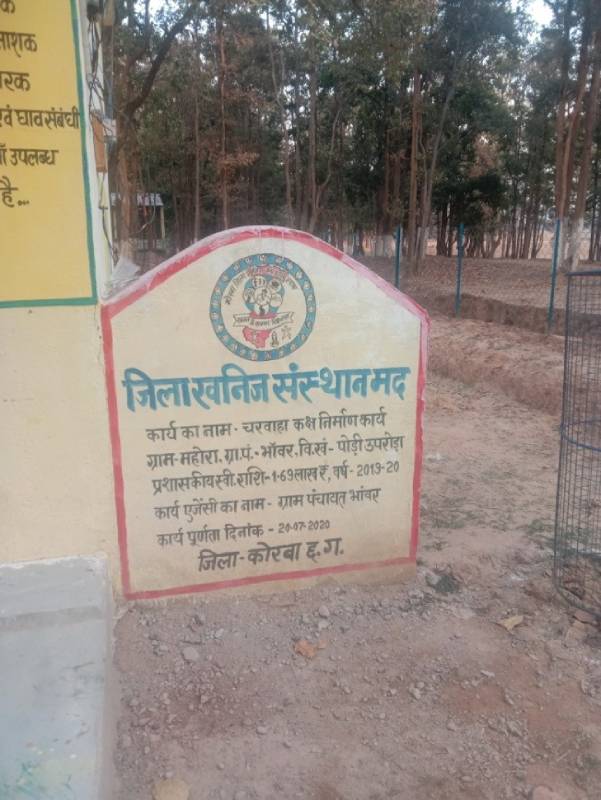
To study differences in performances of DMFs the Rajiv Gandhi Institute for Contemporary Studies (RGICS) commissioned a study to evaluate process and programs of DMFs in five different states. These selected states are- Chhattisgarh, Jharkhand, Odisha, Madhya Pradesh and Rajasthan. It was an attempt to assess performance of DMF to be able to positively touch lives of people and local ecology.
Performances of DMFs
The prospects of DMF are being shadowed by some crucial administrative and investment issues. There is a need to address and rectify these at the earliest, as these are determining factors for the success of DMFs. If this is not done, DMFs might earn some quick returns for special interest groups or an instrument to fulfill a wish list of district administration or elected representatives, but will fail as an institution that has been brought in for the mining-affected people.
Few districts have their DMFT financial inflow more than overall expenditure capacity of them, hence, merging nearby districts in main district with an approach of area development such as Govt of Chhattisgarh is doing, or provision of State Mineral Fund (Madhya Pradesh and Rajasthan) would be suitable for states in utilization of DMFT in equitably and properly.
It is observed that this fund has become just another source of fund for Collectors to take up developmental activities in the district also the involvement of actual beneficiaries is almost negligible and depend of the rationality of elected representatives. The entire amount is being spent through line departments as per their administrative and financial mechanisms. It has little scope to innovate and experiment new ways of program planning and management.
The constitution of DMFT was the mandate to compensate environmental damage due to mining and recovering environmental loss arises from mining and allied activities and to reduce disparity of developmental of local people. Minerals are the finite resources; therefore, funds received from their royalty are also not for forever. Realizing this fact, it is important to use the fund wisely with long-term vision for the long-lasting development of mining areas. Over-burdened district officials and public pressure on elected representatives for popular projects may not be in a position to take decisions on investing the DMFT fund systematically, as per the mandate.
Though the composition of DMF bodies is state specific, in all states they are predominantly bureaucratic. The Governing Council primarily comprises various line department officials and officials holding other significant positions in the district, such as the superintendent of police, the additional district magistrate, the chief executive officer of the Zila Panchayat, etc., as the case may be. There is also representation of elected public representatives, including selected Panchayati Raj Institution (PRI) members and industry representatives related to mining. The Managing Committee comprises entirely of officials, many of whom are also members of the Governing Council. There is a need to visualize mining areas problems with some knowledge-based institutions or projects, may be in a project mode or a regular support to DMFT at state and district level by synchronizing professionals at state and district level PMUs. At district level, Resource Agencies Network (RAN) or alliance, including various line departments to be promoted for better coordination among all stakeholders and planning coordination in major line departments associated with the theme of DMF programmes.
The key roles of the Governing Council include laying down the broad policy framework for the functioning of the Trust, reviewing activities, participating in annual planning, approving annual plans and budgets, conducting audits of schemes and works, reviewing annual reports and accounts, ratifying appointments of officers and auditors, etc. Managing Committee in ensuring timely collection and administration of funds, coordinating and participating in annual planning, monitoring progress of works, preparing and presenting annual reports including accounts and audit reports. These activities can be more professionally managed if state and district level Project Management Units (PMUs), if they have been established, no matter if it is managed by an outsource agency or established by the concerned department of the state. However, they must develop mechanisms to involve beneficiaries in systematic manners. The main beneficiaries are mining development funds are tribal communities, vulnerable segment of society, but they are neither skilled nor technically qualified, to put up their say in planning and development process, hence, it would be a critical exercise, but it should be inevitable.
English Medium School in Slums funded by DMFT in Chhattisgarh
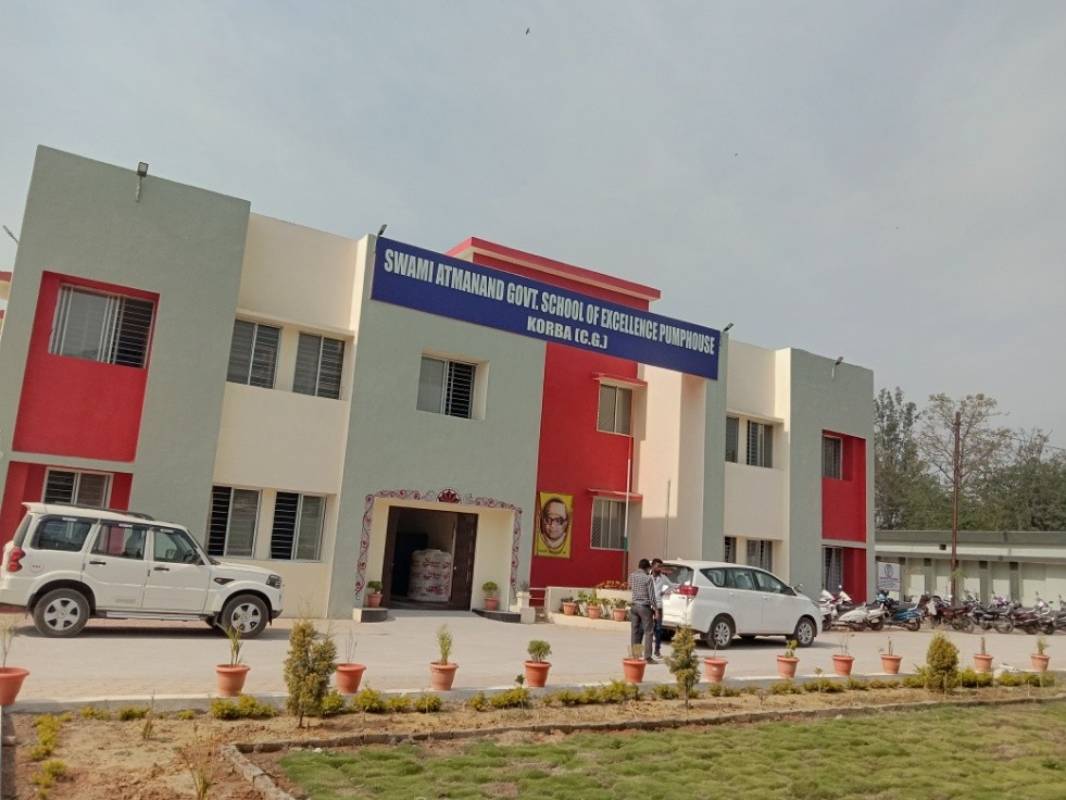
At any point of time, DMF fund should not be treated as a kitty fund and majorly to be used for soft activities rather than infrastructure development or filling gaps in the infrastructure shortage of other schemes. However, in Odisha where the fund is comparatively huge (about 26% of nationwide collection), state is focusing utilization of this fund in major infrastructure projects through Public Sector Units (PSUs), is need to revisit again in their context as state has a paucity of infrastructure in mining areas; nonetheless, this fund to be utilized for development of project affected families, though infrastructure is needed but it cannot be given priority on human and environment development as both are badly affected by mining activities and infrastructure projects will again escalate it.
Comprehensive audit mechanisms for DMFs- financial performance and social audit should be put in place. DMF being a public Trust and operating in line with the PMKKKY- a scheme for public (mining-affected people) benefit, should undergo both financial and performance audit. The financial audit provides assurance that the financial statements properly present the financial situation. Performance audit on the other hand is an assessment of the extent to which an organization, programme or scheme operates economically, efficiently and effectively. Chhattisgarh has shifted all audit procedures under CAG, whereas in Jharkhand the guidelines of Department of Cabinet Secretariat and Vigilance as well as Jharkhand Treasury Code are applicable. These procedures have their own strengths and weaknesses, but overall it should not be overlapped; the administrative controls of the DMFT and monitoring procedures should not hinder the democratization of DMFTs at large. Provisions for social audit involving concerned stakeholders, particularly from mining-affected areas, should be facilitated in DMFs effectively. Social audits provide an opportunity to the ultimate users or beneficiaries to scrutinize development initiatives. It also examines performance of an institution or a programme against its stated objectives, in the context of community values and the distribution of benefits among beneficiaries of various social groups.
Using the DMF for Environment and Development
Due to bureaucratic nature of DMFT, the people participation mainly from mining affected families is very less, the power given to gram sabhas can only be exercised effectively if they also have a representation in the decision-making process of the governing council and their views have been given importance. However, such proactive representation is missing in DMF Trusts. This also reflects a discord between the law, and the mechanism that has been put in place to implement it. Betul DMFT has done experiments to scale up digital participation through mobile app for getting suggestions and incorporating them in the planning process, and these kinds of digital participation processes can be promoted in more DMFTs after examining the results.
Indicators of success of DMF’s programmes should be based on district-specific- micro indicators are needed for success of DMF programmes. Proactive involvement of government functionaries, elected representatives, business entities involved in mineral extractions, community and community-based organisations, civil society- domain experts, media and academic institutions are inevitable for the success of DMF activities and functioning. Primary stakeholders like tribal communities should actively take part in the planning process. DMF has to ensure to engage them through the consultative process rather than advise them to opt western model or economic model of development, also enough space to be given for indigenous knowledge promotion.
A knowledge platform to facilitate planning, implementation, monitoring and evaluation of programs for environmental regeneration and sustainable development in mining areas is needed within DMF establishment, this can be state level wing under State Level committee or some regions as per Area Development Approach. Mainly to undertake applied research, knowledge building, policy facilitation, and catalyse collaborative action at the state and district level for innovative and effective use of DMF funds for the development in mining areas. showcase successful examples to other states, as well learn from others’ successes. This platform to be used for building capacity at State PMU and the district PMU, also among elected people representatives and PRIs, officials of the line departments, and civil society and corporate organisations to develop and strategies a long-term planning and action for utilization of DMF funds. Under this larger umbrella elected representatives of PRIs, officials from government departments, experts from knowledge Institutions, corporate sector and civil Society can meet and discuss a common action plan for the betterment of the districts and state with the shared resources and convergence of various schemes.
Conclusion
Mining related operations largely affect less developed and remote areas of the state, and vulnerable sections of the population, especially Scheduled Tribes. It is necessary that special care and attention is to be devoted, in an organized and structured manner, so as to ensure that these areas and affected persons are benefited by the mineral wealth in their regions and are empowered to improve their standard of living. The study of DMF in five major states reveals that despite the central guidelines for governance and programs of DMFs, the performances of DMF vary from state to state. In fact, DMF performance also varies within the state. Few proactive states like Chhattisgarh further developed the centre’s guidelines as per requirement of the state. It has been observed that Chhattisgarh has invested DMF fund in many innovative social and environmental programs in the state. Moreover in many states like Odisha, Jharkhand, Madhya Pradesh and Rajasthan the entire decision making system is very centralized. It has adversely investment of DMF fund for the welfare of mining affected people.
Initially, in all states mega projects such as school campus, hospital buildings, roads etc were funded through this fund. In many case such huge infrastructures are lying idle in the absence of required human resource and recurring cost to run them. The Chhattisgarh government learned from this, and decided to invest maximum of this fund for soft activities such as education, health facilities, employment generation, self help group promotion, horticulture development etc. The study observed that micro initiative directly linked to the lives and livelihood of people have higher potential to meet developmental demands of people and ecological demand of the nature. We also observed that more decentralized system has higher efficiency in meeting developmental demands of local people. Therefore, we recommend decentralize decision making system and higher participation of mining affected people in the DMFs.
Footnotes:
[1]Annual Report (2019-2020), Ministry of Mines, Government of India.
[2]https://science.thewire.in/health/chhattisgarh-villagers-health-left-to-gods-mercy-as-coal-india-shirks-its-duty
[3]https://www.downtoearth.org.in/coverage/forests/bastar-beyond-maoists-tale-of-a-rich-region-and-its-poor-people-56746
[4]https://www.patrika.com/dantewada-news/dantewada-32-villages-of-bastar-red-water-will-rid-1414863/
[5]https://thewire.in/environment/odisha-mining-tribals-access-to-air-water
[6]Priyadarshi Nitish (2009). Radiation in Jadugoda in Jharkhand State of India, retrieved from https://www.scribd.com/document/24085066/Radiation-in-Jadugoda-in-Jharkhand-State-of-India#download

